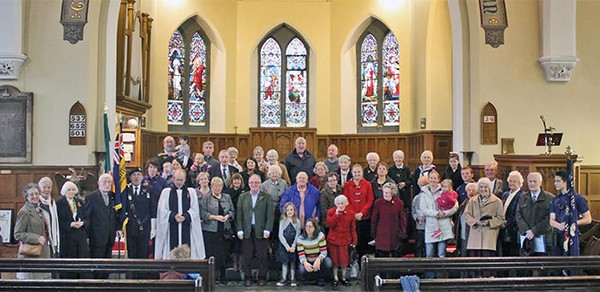
A timely historical lecture took place on the hallowed ground of St Matthew’s Church, Irishtown on November 8th, commemorating the 100th anniversary of the Great War.
The lecturer in question was Patrick Hugh Lynch, researcher in the Department of Arts, Heritage and the Gaeltacht, with the primary goal of outlining the documented historical relationship between the parish and World War One and the 1916 Easter Rising.
Over the years, Lynch has done considerable research into the circumstances of returning Irish servicemen and women from WWI during the early days of the Irish Free State, which constituted a significant bulk of the lecture, entitled WWW – Worship, Welfare, War.
WWW was a socio-economic study of the parish and detailed many fascinating historical occurrences. In September 1914 special intercessory services took place every Wednesday evening in St Matthew’s, while later on in the year the first meeting of a new branch of the Red Cross Society took place on November 5th.
The first casualty report involving a parishioner was published in the Parish Magazine of November 1914, paying homage to Mr Charles Robert Young of Sandymount, who succumbed to his wounds while serving on the front lines.
Welfare support played a significant role in the parish, with the YMCA creating huts and appealing for subscriptions in June 1915, all of which was done for ex-servicemen, many of whom were disabled or could simply not find work.
Lynch also elaborated on the service record of the St Matthew’s Boy’s Brigade Company. 132 members had joined up during the war. Out of these 132 servicemen, two and 14 obtained commissions in the Navy and Army respectively. One received the Distinguished Conduct Medal while three won the Military Cross. 16 of the 132 ultimately lost their lives.
“What was learnt from all of this was the waste of life, the insanity of it all,” Patrick Hugh Lynch told NewsFour. “People that have been to the war graves on the continent would understand the effects of killing on an industrial scale. Above all, it’s for people to look back and ask ‘what have we achieved in 100 years?”’
Lynch also pointed out the role the Irishtown-Ringsend-Sandymount area played in the Easter Rising. The lecture nodded to such significant battles as the violence that ensued on Mount Street Bridge, the taking of Boland’s Mill and Beggar’s Bush barracks.
WWW also detailed the pivotal role played by the gone but forgotten Sir Patrick Dun’s Hospital on Grand Canal Street, which had two nursing contingents present in the area at the time of the fighting, organised by the St John’s Ambulance Brigade and the Red Cross.
Special mention was also given to an incident in which four bullets penetrated the door of St Matthew’s Boys School in May 1916, resulting in a company of soldiers encamping in St Matthew’s Church and Irishtown schoolhouse at a time of martial law.
Patrick Lynch received his Masters by Research Degree from UCD in 2009. A former pupil of Sandymount High School, he refers to himself as a “belated academic”. In his historical inquiries, he has worked with members of the Foreign Legion, the American Forces, and has presided over the Heritage Week lecture in St Patrick’s Cathedral to name but a few. He spoke to NewsFour about the importance of keeping history moving forward in the area.
“St Matthew’s community have reached out to everybody, because there wasn’t a family in the area that wasn’t touched by the Great War or the Easter Rising,” Patrick said. “There are plenty of people in the area who still have memorabilia of the Rising and the Great War. Whatever you have, show it to your kids. Whatever you have in the attic, bring it down!”
By Craig Kinsella



